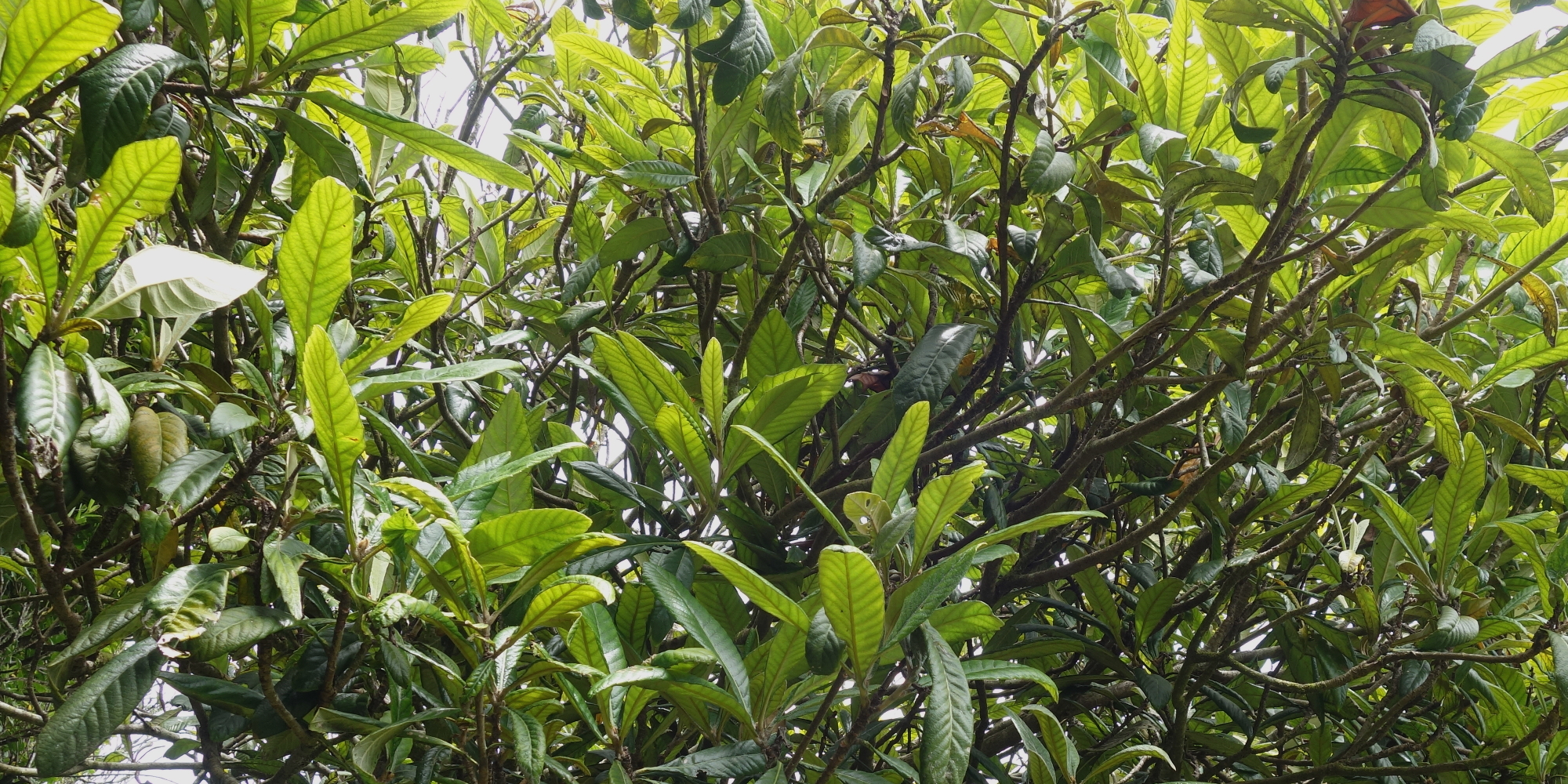So here’s a little post about eating Torreya californica seeds.
Torreya (aka ‘nutmeg yews’) is a small genus of conifers native to Asia (mostly China and Japan) and the United States. All Torreya seeds are highly edible and species such as Torreya grandis have been cultivated in China for at least 1500 years (!) for their edible nuts.
Torreya nucifera has a similar long history of cultivation in Japan, and the wood is highly sought after for traditional uses.
Torreya taxifolia is “native” (it’s functionally almost extinct there) to Florida and is one of the most interesting case studies in glacial relict species. It is able to reproduce with ease 500km to 1000km North, and so makes a strong case for assisted migration.
Unusually for a conifer, Torreya seed is produced singly per fruit, and ranges from 2cm to 4cm long. For the kiwis, it looks a bit like a miro (Prumnopitys ferruginea) fruit, which is also a conifer that produces a single-seeded “fruit”. Torreya fruits turn from green to purple when ripe.

All Torreya are slow growing evergreen trees, and thus are an investment in time to grow. However they are very pleasing trees with beautiful foliage.

Torreya californica is as the name suggests, is native to California. It’s a rare tree there, isolated to a few mountain refuges. The seeds are about 3cm to 4cm long.
In New Zealand, Torreya are very rare trees. There are perhaps less than 10-20 fruiting specimens in the whole country (even that might be a great over exaggeration). I was able to locate a small planting of mature Torreya californica thanks to a tip-off from a friend, and hiding in the weeds underneath was a number of well-preserved seeds. Hopefully these will become many healthy saplings in time.

I could not find any written articles on the internet describing how to eat Torreya nuts, and what they taste like, despite many sources saying that they’re delicious and edible, so that’s what I have done here. The majority of the seeds I collected I have sown, but in order to get people to want to grow these seedlings, some seeds had to be sacrificed to produce this taste report.
So first of all, I lightly cracked a few seeds by hitting them with a rock while they rested on the concrete . The shells cracked rather easily. I took these inside and put them on a plate, and then using a butter-knife, I prised apart the shell fragments.

I was at first concerned that the seeds were rotten after a year outside, but then remembered they have very long viability (3+ years outside), and so they should be okay. I found a photo of a freshly chopped Torreya taxifolia which confirms the brown edge is present on fresh seeds:

Then I chopped the Torreya nut pieces into slivers. I ate a few raw to sample the taste. The raw taste was not particularly impressive. It was a bit gritty, reminding me of shredded coconut without the coconut overtones. Occasionally an earthy flavour was present (likely stronger because the seeds were at least a year old). There wasn’t too much flavour to the inside, but I could tell it was oily by the mouthfeel. There was a very subtle piny taste sometimes, but barely there (again maybe because these seeds were a year old, the flavour was muted).

The rest of the slivers I dry-fried in a pan. I did accidentally burn them a little bit in my excitement, but the flavour on the bigger pieces was definitely much improved.
Now the gritty texture was gone, and it was replaced with a classic toasted nut flavour, an undertone of toasted pine nut and the earthy flavour had completely blended into the toasted nut flavour. The texture was much smoother as well. Much more enjoyable, and would eat again, especially given how easy they were to process because of their large size.
In conclusion, Torreya californica nuts are large, easy to open and process by hand, and once cooked have a delicious nutty flavour with an undertone of roasted pine nuts.
If you have gotten this far, then I am always interested in buying/trading for more Torreya seeds from readers, and plants will be available from the nursery in the future 🙂

Thanks for this informative article. I would definitely be interested in some seedlings! Are they self fertile?
Thanks Josi. They are not self-fertile and do require separate male and female plants. A bit like some of the Araucaria in that respect. Hopefully I can get the seeds to germinate!
Hello Jon thank you for this article and answering several questions about this particular topic. If you are still interested in torreya californica seeds or seedlings let me know. I happen to live, work and have access to a wide spread thriving grove of these trees.
I have 30, 2 year old seedlings. 6 months in the fridge then almost 100% strike rate. A beautiful tree, and after 2 years they are beginning to flush with beautiful branches and foliage. Does anyone know if this is Taxifolia or nurcifera?
Thanks
Hi Peter,
I’d say most likely you’re growing Torreya californica based on where you are. I’m not aware of any other mature Torreya species groves in Canterbury.